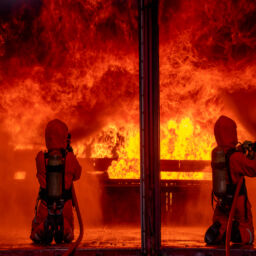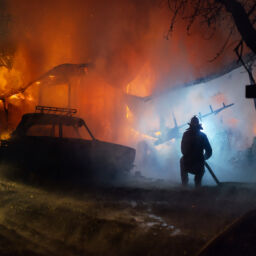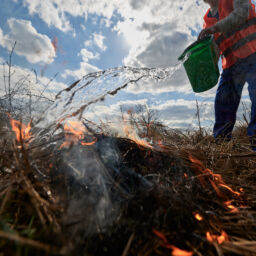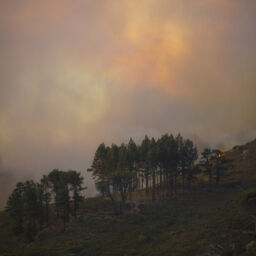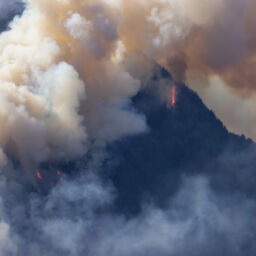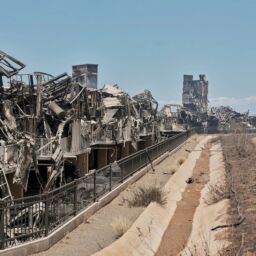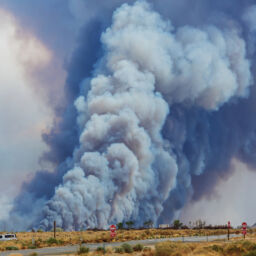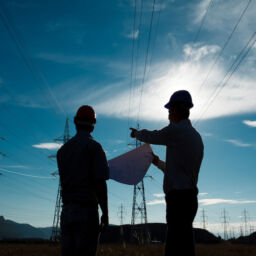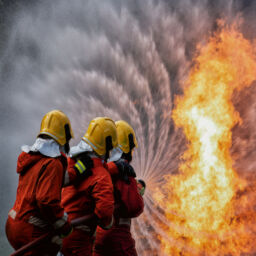LAHAINA, Hawaii — The cheerful lilt of Hawaiian music was flowing through Marjorie St. Clair’s apartment when she paused to bring her plants inside, away from the fierce winds of a distant hurricane. Reality flipped upside down. The sky outside was onyx, her smoke alarm began shrieking, her two cats fled, and the 81-year-old found herself grabbing a face mask and eye drops and dashing downhill to the parking lot of Hale Mahaolu Eono, the low-income senior-living complex she called home.
St. Clair passed her neighbor Joe Schilling, 67, who was scanning his phone for information on the fire darkening the sky. She called out to June Anbe, who used a walker, and Anbe responded that she was waiting for a relative. St. Clair jumped into her Honda and drove through flames, away from the complex that would quickly transform from affordable paradise to scorched rubble.
Two weeks after a conflagration consumed Lahaina, St. Clair is among the lucky — homeless, but alive. Eight residents, nearly a quarter of the total who lived there, may not be, survivors say. Schilling, who a relative said last texted from a unit where he said he was huddled with five other neighbors, is gone. Anbe remains unaccounted for. Three other residents, who ranged in age from 79 to 90 and all had difficulty walking, have been confirmed dead. Three more, 78 to 98, remain missing.
The blaze that left this laid-back oceanside town in ruins killed 115 people and possibly hundreds more, their names and ages shrouded in ash amid painstaking efforts to identify the dead. But the ages of the few that authorities have named so far point to the disproportionate toll natural disasters have on seniors, who often do not easily walk, let alone run, drive or use a smartphone, to aid their escapes. Sixteen of the 21 named were above 65.
It is a pattern seen disaster after disaster. Half of those killed by Hurricane Katrina in New Orleans in 2005 were older than 75. In Northern California’s 2018 Camp Fire, which was the deadliest recent conflagration before Lahaina, 66 of 85 identified fatalities were over 65. Nearly half of the dozens killed when Hurricane Sandy slammed the New York tri-state area in 2012 were 65 or older.
The need to make this population a priority is rising as climate change fuels more natural disasters and the population grows older, said Nancy LeaMond, executive vice president at AARP.
“State and local leaders and emergency officials must be better equipped and prepared to ensure that older adults are kept safe and their needs are met when a disaster strikes,” she said.
In interviews, residents of Hale Mahaolu Eono and their relatives said the opposite happened in Lahaina. The government failed to improve wildfire prevention or warnings, they said, and staff left hours before the major fire began. Instead, as in much of Lahaina, neighbors relied on each other — or no one.
“I thought they’d abandoned me there to die,” said resident Kathleen Sicard, who is in her sixties. “It was everyone for themselves.”
[…]
Staffers knocked on every resident’s door that morning to warn them that they might need to evacuate amid heavy winds, the company said in a separate statement. When the resident manager — whose job was to be on call during evenings and weekends — decided to evacuate at 11:30a.m. that Tuesday, hours before the fire raged, he encouraged four residents to come, but they declined, the statement said.
Residents strongly dispute this account. Several said no one knocked on their door in the morning. Even if the complex had no legal obligation to help residents to safety, they contend, it had a moral one.
“Yeah, they could probably cook for themselves, clean for themselves, go to the bathroom,” said Clifford Abihai, who has spent the days since the fire scouring Maui for his missing grandmother, Louise Abihai, who lived at the complex. “But that doesn’t mean they could run. That doesn’t mean they could escape from disasters.”
[…]
Five years before, a wildfire had burned 21 structures in Lahaina. At that time, police cruised streets ordering evacuations, and Hale Mahaolu Eono staffers helped carry some weaker residents out, residents said.
[…]
After the fire this month was initially declared contained, the dry wind seemed only a minor concern. Ramelb, an artist, stayed inside, painting abstract coconuts. Tina Bass, 72, went out to buy papayas and marveled at the gusts rocking her car. St. Clair heard a crash and stepped outside to see a section of fence on her lawn. Schilling, a gregarious golfer, cleared it for her.
On a midday run for Pepsi and cigarettes, Sicard took a video of palm trees bowing in the heavy winds. They looked amusing, not alarming, she remembered thinking.
But conditions soon turned ominous. Not long before 2 p.m., Bass, the complex’s gruff social butterfly, sent a text to a friend: “Smelled smoke.” She walked to the road and, seeing flames on the arid hills above Lahaina, hustled back to the complex and turned into a drill sergeant — or tried.
Buddy Jantoc, a 79-year-old musician who had toured with Santana and still performed at local malls and luaus, was outside. He no longer heard or saw well, and Bass ordered him to gather his things, advice she thought he was heeding. He would perish in the fire.
Bass raced to her apartment in Building B and only had enough time to collect one of her two cats before black smoke filled the room and heat began burning the hair on her arms.
As Bass rushed toward her car, Schilling, still outside, told her he would be “right behind” her. Passing the opera singer’s open door, she told him to leave. “He says to me, ‘Tina, Tina, it’s okay, there’s no alarm in my house,’” Bass recalled. He remains missing.
Bass banged on Ramelb’s door and screamed, “Get out, the building is on fire!” Another neighbor, panicked, jumped in her passenger seat.
Sicard, in her sixties and filled with “more metal than a World War II veteran” after multiple surgeries, ran through flying embers as best she could, her cane in one hand. Her other hand held a bag of crackers and water she had packed that morning to consume while watching the sunset. Now it was the closest thing to a go-bag she could carry.
As she worked her way toward the parking lot, Sicard was struck by the eerie quiet.
“The fire was silent. The wind was silent,” she said. “As powerful as it was, it was silent. It made the hair on your neck stand up. It felt like the devil was there.”
Inside Building A, Camilo Cortes, 91 and hardly able to walk, and his wife, Juliana Cortes, 86, decided to leave on foot. They had no car.
[…]
The same day, Ramelb went to Goodwill to buy a change of clothes. There, she said, she saw the resident manager of Hale Mahaolu Eono and his wife. She approached, she said, and asked one question: “Where are June and Joe and Virgie?”
The manager, Ramelb said, had the “blank eyes of a zombie” and responded in a tone of shock.
“We just didn’t have enough room in our car,” she said he told her.
The Hale Mahaolu Eono residents who made it out are now mostly scattered across Maui hotels and condos, like thousands of evacuees here. Their good fortune — cheap, nice housing in paradise — is now wreckage.
[…]
In its statement, Hale Mahaolu said it has been in touch with displaced residents and offered help with housing, clothing and food. Most residents interviewed for this article said they had not been contacted. None said they had been offered clothing or food.
[…]
“Nobody did it on purpose,” said Sicard, who has concluded that the answer is a buddy system that would pair seniors everywhere with willing drivers. “Nobody knew how to handle this.”
(Valerie) Parmelee said she missed a call from the company last week when she was disembarking from her first flight in two decades. She does not plan to call back.
She and her husband left behind Lahaina, where for years she booked fishing charters in the harbor and worked in art shops and jewelry stores on Front Street. They moved to Arizona, where they have family, and will look for subsidized housing there, she said.
Parmelee has taken up journaling and wrote a poem about her terrifying escape from the Lahaina fire.
“The line of fire was coming straight off the mountain, like a fire-breathing dragon,” she read aloud on a recent day, her voice choking.
She thinks about her sweet friend Jantoc, who she had always figured would die while performing. Knowing he was losing his hearing and sight, she had started to say, “Hi Buddy, it’s me, Valerie!” when she saw him.
“We were very thoughtful about each other,” she said. “We were a little community.”
Full story: Washington Post August 24, 2023


